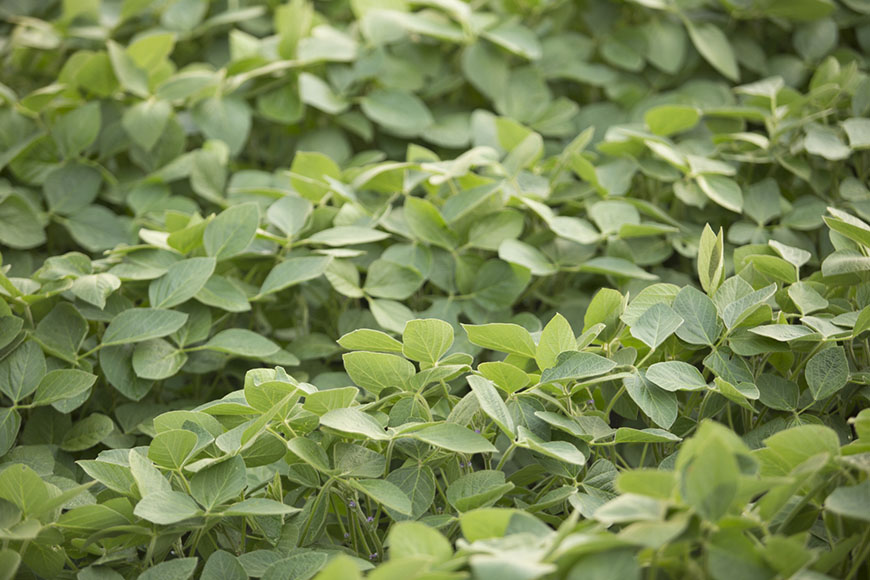Soybeans: Fighting Disease in 2015

The 2015 growing season was cool and wet for most of the Midwest, which led to higher disease pressure and lower insect pressure in soybean fields.
Several WinField agronomists discussed the most prevalent diseases and insects from the past year and how to combat pressure in 2016 in the recent Corn & Soybean Digest article “2016 Soybean Outlook: Diseases and Insects.”
Insect and disease highlights from each state included:
Ohio
Several WinField agronomists discussed the most prevalent diseases and insects from the past year and how to combat pressure in 2016 in the recent Corn & Soybean Digest article “2016 Soybean Outlook: Diseases and Insects.”
Insect and disease highlights from each state included:
Ohio
- Increased moisture in 2015 triggered the development of root and stem diseases, including Phytophthora, sudden death syndrome (SDS) and white mold.
- With Ohio’s typical rainfall, farmers should expect some disease pressure in 2016. The first step in management should be variety selection and seed treatment, according to agronomist John Smith.
- Smith says that Ohio hasn’t seen frogeye leaf spot pressure in a few years, but it was present in the southern part of the state. If conditions are favorable, frogeye may be a bigger issue for farmers in 2016 than in 2015.
- The most prevalent disease in Wisconsin soybean fields was white mold according to Kevin Sloane, eastern regional technical seed manager. “We saw more white mold pressure last year than in the past four years,” says Sloane.
- Trait selection is the most important factor to consider when managing white mold, and monitoring fields with a history of the disease will be essential for prevention in 2016.
- Cool, wet weather and heavy morning fog contributed to “notoriously high infestations of soybean white mold,” says agronomist Bob Beck. This was prevalent throughout much of northern Illinois, but warm weather in the southern part of the state minimized disease pressure in this region.
- Soybean SDS, brown stem rot and charcoal rot were also present throughout the state.
- Beck tells farmers they should “put offensive soybean varieties in areas you can keep clean and that have no history of disease.” Farmers should also be ready to start scouting in spring, especially in no-till fields.
- Heavy rains in June and July caused root and stem rots in soybean fields across the state. According to agronomist George Watters, “Rain events and heavy dews created an environment that was favorable to foliar diseases, including frogeye leaf spot, cercospora leaf spot and septoria brown spot.” Septoria brown spot is a constant source of pressure for soybeans, and is expected to continue in 2016 as well.
- Stinkbugs in southern Indiana and bean leaf beetles in western Indiana became significant foliar and pod feeders during the summer months. These pests will cause problems for soybeans in 2016. “Both insects overwinter as adults. Our winter weather has been fairly mild so far, so it could result in high survival rates,” says Watters.
- Aphids caused the highest insect pressure for Minnesotan soybeans this year, says agronomist Jon Zuk. Farmers who scouted diligently and acted quickly were most successful in controlling aphids.
- “Spending time in the field scouting and communicating with your agronomist are probably the best ways to stay on top of which insects are out there,” says Zuk.
- White mold caused the most disease pressure in 2015, though it wasn’t observed in all areas of the state.
- Early-season soybean diseases such as Pythium, Phytopthora and Fusarium were prevalent in 2015, and led to sudden death syndrome (SDS) later in the season, according to agronomist Ryan Wolf. “Farmers who used more fungicide on seed were better off early in the season,” says Wolf.
- Seedling diseases will probably occur in 2016 because of the saturated soil conditions throughout 2015.
- White mold also surfaced later in the season, and variety selection was key in preventing white mold and SDS for soybeans.
- Early soybean diseases, especially Phytopthora, were evident in 2015. Soybean white mold appeared later in the season, “much more than we’ve seen in the state for a number of years, due to timely rains,” says Ryan Wolf.
- According to Wolf, fungicide applied during the reproductive stage in soybeans helped protect yield.
- Diligent scouting can help discover insect and disease problems early, but fast action is crucial. “Anybody can scout,” Ryan cautions, “but making the decision to pull the trigger to do something if you find a problem is probably the biggest factor in protecting yield potential.”

